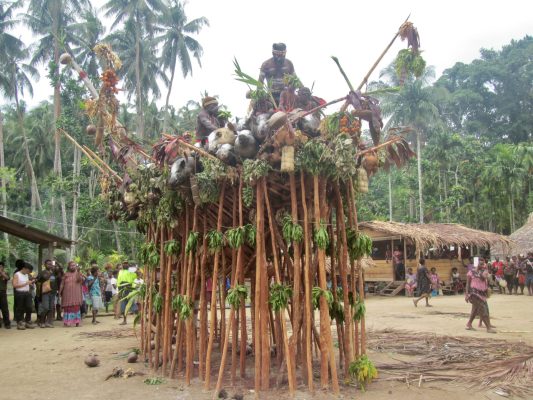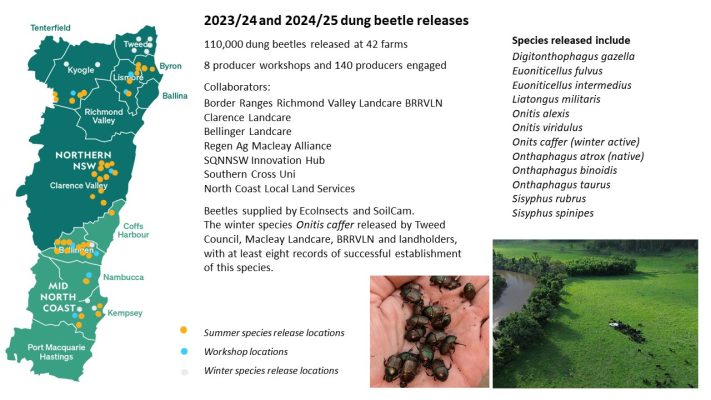How does a farm extension advisor pass their time with the SQNNSW Innovation Hub?
This is part 2 of ‘a day in a life of’.
I’m Gavin Tinning, and I’m based at Southern Cross University and work across the north coast region of NSW. I work with farmers, partners like Landcare and researchers from SCU to support people managing our diverse soils and landscapes. This is what I’ve been up to so far in 2025…
January 2025
Keeping on a farming theme, whilst on holidays I marvelled at a traditional ceremony and feast on New Ireland. Traditional culture in Papua New Guinea places food at the core of work and celebration. I loved seeing gardens everywhere, eating locally produced chocolate and you can’t drink too many coconuts!


February
Pasture dieback continues to affect large areas of pasture and is spreading further south on the north coast. SCU researchers have set up a new trial of different tropical and temperate species on the Clarence River to measure their response to the recent presence of pasture dieback.


I captured some footage from the Tweed Valley of approaches farmers are taking to recover pasture and ground cover in paddocks affected by pasture dieback.
A Clarence Valley property Chaffin Creek Farm was one of the winners of the SQNNSW Innovation Hub World Soils Day competition.
Northern Soils Coordinator Cam Leckie sampled the property and will share soils insights for this landscape at a workshop in May.


We completed the first part of field sampling for Edward White’s PhD project on northern rivers dung beetles. An exciting component of his project is eDNA analysis of sampled soil and dung, to better understand soil bacteria and fungi interaction with dung beetles, manure and soils in grazing systems.
Ed’s research helps to monitor the impact of dung beetle releases conducted over the last two summers.


SCU rice breeder Szab is managing a fantastic trial selecting dryland black rice varieties for drought, cold and Blast tolerance. If it dries out a bit, we are hoping to collaborate on a trial investigating the weed suppression qualities of different cover crops within a rice crop rotation.
March 2024
Multiple intense rainfall and flood events have tested recent works and plantings, part of a collaboration with the Watershed Initiative project managed by Rous. The works have held up well and it is interesting to observe the capacity of vegetation to capture debris and sediment before it reaches the river.




This approach is part of what is required at scale to achieve an improvement in water quality in the Richmond River with less muddy water heading down to Ballina and out to sea.
I finished the month of March attending a multi species pastures field day run by Nambucca Valley Landcare, which included a fantastic presentation from Chris Eggert, from Oxhill Organics near Wauchope.
Nambucca Valley Landcare are setting up a number of small demonstrations of approaches to increasing pasture diversity, to help producers understand more about plant species, establishment and management questions.
I’ve been compiling a guide to multi species pastures on the NSW north coast. A draft is now available, and I’m aiming to update it later this year based on feedback, and to add some more case studies.